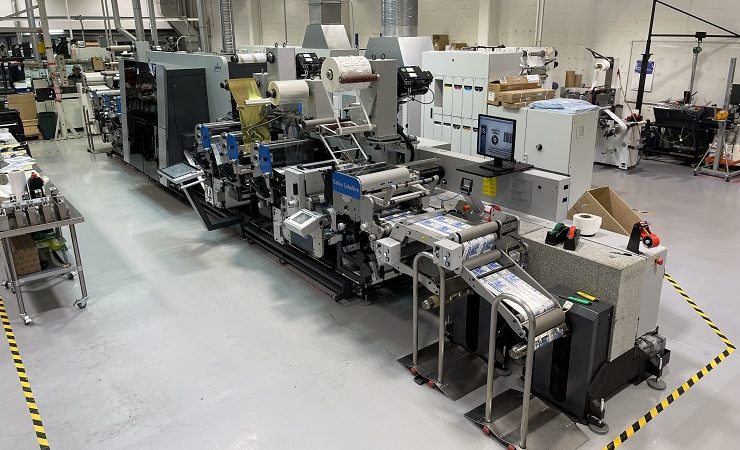PhilStic, a family owned company, has purchased the first Gallus Labelfire in New Zealand, for the variety of versatility of printing options it brings.
The Gallus Labelfire 340 is the first Labelfire in New Zealand after two machine systems were installed in Australia.
With a promise to provide a 24-hour turnaround service, and a reputation for the ability to deliver a huge variety of label products, PhilStic has set the bar high.
Steve Holmes, operations manager, said ,‘This new Labelfire press features all the latest improvements and enhancements and has been configured to our specifications. It includes two flexo printing units and metallic cold foil upstream of the central digital inkjet print unit, and a further three flexo units, plus a cold foil station for foiling or lamination, as well as a varnishing unit with extended curing track, all downstream.’
‘One of the key advantages of the Gallus Labelfire is that it’s a true hybrid machine, so the whole label converting process can be handled in a single pass, with quick set up, very fast run speeds and easy operation,’ said Mr Holmes, ‘Quite simply, it was by far the best solution to produce the quality and variety of products we need, productively and profitably – and our operators love it!’
Production manager Bart Mann explained, ‘We produce a huge range of products, with a special focus on booklet and multi-web labels for the chemical industry – just one of the sectors which requires extreme accuracy and precision processing.’
‘The Gallus applies the ink directly to the substrate, with no mixing or need for additional calibration, and the Heidelberg ink set is fantastic for light fastness and longevity. That’s really important, particularly for some labels which are used on things like chemical drums, which are often stored outside,’ Mr Mann explained, ‘The colour consistency is also a huge bonus with high-end, brand-conscious clients and regular repeat jobs.’
‘The Labelfire delivers accurate colour matching and repeatability, whether that’s across various labels in a range, different product labels for the same brand, or repeats of previous runs. We can have eight or more versions of a label in a job, so being able to easily achieve that consistency across the entire range is vital.’


